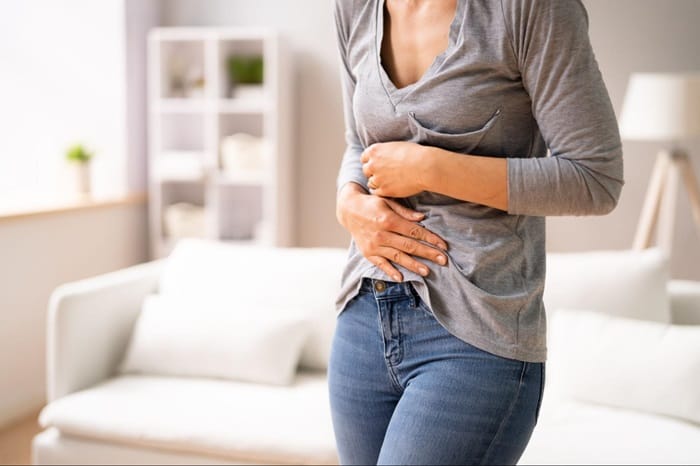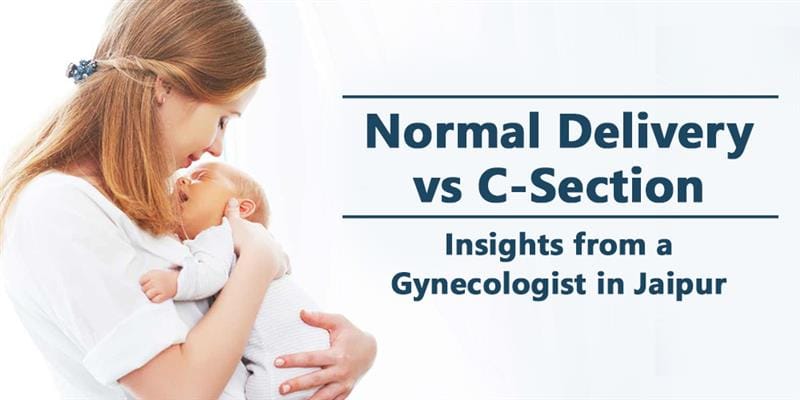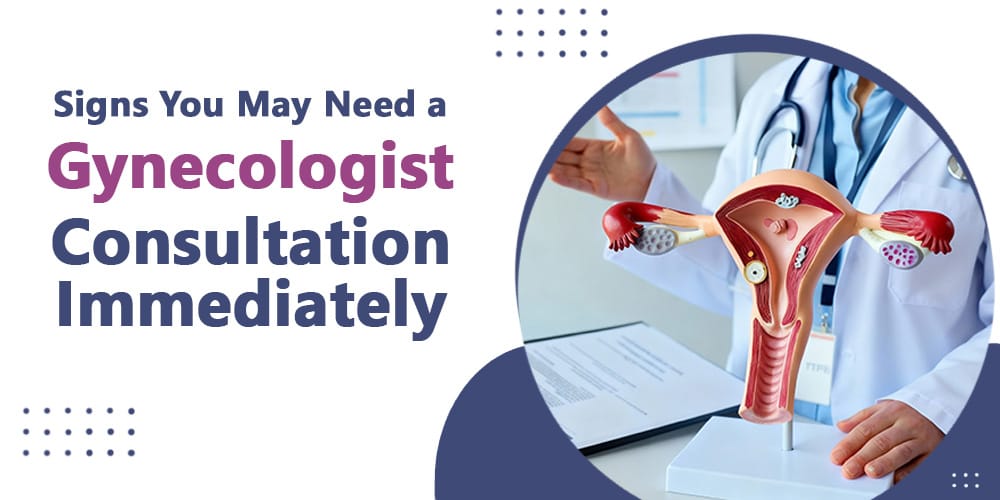The existence or nonexistence of dyspareunia, pelvic pain, pressure, recurrent menorrhagia, and urinary issues could be caused by fibroids, based on their location and size. Since uterine fibroids affect about 80% of females, with ages ranging from 30 years to 50 years, a laparoscopic solution is required to eliminate it.
Unusual uterine shape changes could also indicate the existence of fibroids, and a regular pelvic checkup or evaluation may unintentionally uncover uterine fibroids. Major surgery is unnecessary with a few innovative surgical or laparoscopic procedures. An additional choice for hysterectomy is laparoscopic myomectomy.
In contrast, a myomectomy or an entire vaginal or abdominal hysterectomy could be necessary as surgical therapy when you notice signs and symptoms of uterine fibroids. Let us check the suggested laparoscopic solutions discovered by Dr. Pankhuri Gautam, a senior Gynecologist in Jaipur, to help you eliminate issues of fibroids and associated symptoms.
Overview Of Uterine Fibroids
Fibroids are not malignant tumors that grow on or within the uterine walls. Myomas and leiomyomas are the other names for uterine fibroids. Uterine fibroids are the most prevalent benign or non-cancerous tumors in women of childbearing age or between 30 and 50.
Fibroids may slowly grow over the years or remain relatively small for an extended period before growing rapidly. While some women with fibroids experience bleeding, discomfort, or both, many others have fibroids with no indications or symptoms. There might be single or several fibroids of different sizes.
Fibroid variations can be noticed in location, shape, and size. These could be on the outer surface, inside the uterus, or connected to it by a structure like a stem. Fibroids can occasionally become so big that they occupy the abdomen or pelvis entirely. They are usually found in the size of a pea or more extensive, circular growths that are more than five or six inches in width and can enlarge and deform both the outer and interior of the uterus.
Discovering The Best Laparoscopic Solutions That Effectively Work With Fibroids
The technique employed depends on the fibroids’ size and location. Here are a few of the laparoscopic solutions for patients looking to eradicate uterine fibroids.
Laparoscopic Myomectomy Or Robotic Myomectomy
The doctor removes fibroids during myomectomy, leaving the uterus in its place. This procedure is suggested for a few fibroids. The doctor inserts the device through a small abdomen incision to remove fibroids from the uterine region.
The laparoscopic procedure occasionally uses a robotic system to help the doctor view the patient’s abdomen. The doctor uses a tiny camera attached to the specific tool to view the patient’s abdomen on a monitor. During a robotic myomectomy, the doctor is provided with a 3D magnified picture of the uterus. The procedure for using this solution is significantly precise.
Laparoscopic Hysterectomy
Fibroid recurrence can be avoided with a total hysterectomy. Excessive bleeding or large fibroids are treated through this procedure. Early menopause or decreased libido are potential negative consequences when the doctor also removes the fallopian tubes and ovaries.
The process of Hysterectomy involves uterus removal through the vaginal area or an incision in the abdomen. This procedure involves removing the uterus whole or in part.
When the fibroids are exceedingly large, and all other treatments are not feasible or have failed, a hysterectomy is performed, but you cannot conceive a child after this procedure.
The doctor may administer regional anesthesia to block feelings in the patient’s lower body or general anesthesia to relieve discomfort. A hospital stay is required for a few days after a laparoscopic hysterectomy.
Myomectomy
Although a myomectomy does not stop the ability to conceive the child again, it might occasionally result in infertility when internal scarring from a myomectomy occurs. Women who conceive a child after myomectomy may require a cesarean delivery.
Fibroids removal from the uterus without removing it is known as a myomectomy. New fibroids might grow after the surgical procedure but do not regrow. However, if they grow, a further surgical procedure may be necessitated.
The approach taken for myomectomy depends on how the fibroids are located and sized. Three types of myomectomy that a doctor may perform include hysteroscopy, laparoscopy, and laparotomy.
- Hysteroscopy:
This procedure often controls the bleeding that the patient experiences due to fibroids yet cannot remove the fibroid that is growing deep inside the uterine wall. When fibroids grow into the uterine cavity, they are removed using hysteroscopy. The doctor inserts a resectoscope through a hysteroscope to destroy fibroids with a laser beam or electricity. Hospitalization during hysteroscopy is not extended, and the doctor may discharge the patient on the same day of the procedure.
- Laparoscopy:
A laparoscope is used during a laparoscopy surgery to help the surgeon view the interior of the patient’s pelvis. This procedure removes fibroids by inserting additional tools through the second tiny incision.
- Laparotomy:
A cut or incision is made in the abdominal area during laparotomy to remove fibroids from the incision.
Symptoms Of Fibroids
There is no requirement for treatment for fibroids that are small, symptomless, or develop in a woman approaching menopause. Some indications that a patient needs medical attention and laparoscopic solution or indicates having fibroids are the following:
- Menstruation changes including heavy, more often painful, or longer menstrual periods that may disrupt the patient’s routine or cause anemia
- Blood loss or anemia
- Vaginal bleeding (not associated with menstruation), menstruation pain, or bleeding between menstrual periods
- Lower back, pelvic, or abdominal pain
- The rapid increase in fibroid growth
- Discomfort during intercourse
- Infertility, miscarriages
- Swelling or enlarged abdomen and uterus
- Fullness or pressure in the lower abdomen
- Discomfort while having sex
- Menstrual clots or prolonged menstrual periods
- Abdominal cramps and pressure
- Complex bowel movements, rectal pain, and constipation
- Frequent or difficulty in urination
Benefits Of Laparoscopy Approach For Uterine Fibroids
- The laparoscopic approach helps relieve pressure on the bowel or bladder, pelvic region pain, heavy and abnormal menstrual bleeding, and other symptoms associated with uterine fibroids.
- Post-operative pain is less.
- Shorter hospital stay and recovery time
- Less expense due to shorter hospitalization
- It is a minimally invasive approach
- The incisions made are smaller
- Scars are small
- Difficulty or frequent urination
Conclusion
Laparoscopic solutions are required to relieve the severe symptoms that may bother you. Growths inside or outside the uterus are called uterine fibroids. These abnormal growths often do not cause any symptoms and do not necessitate any medical intervention. You might also need a solution if you’re going to conceive a child and have trouble having it since fibroids increase pregnancy complications while increasing miscarriage risk. Myomectomy can help you eliminate fibroids while helping you conceive a child.
However, laparoscopic treatments such as medication or surgery can help ease discomfort as well as pain, heavy bleeding, or other symptoms if they are severe. Dr Pankhuri Gautam advises opting for laparoscopic solutions when you are fed up with fibroids and looking for a solution with faster recovery.
The suggested laparoscopic solutions include laparoscopic myomectomy, Robotic myomectomy, and laparoscopic hysterectomy. You may visit the facility today and get advice on the laparoscopic solution that works well with the fibroids.
The treatment or laparoscopic solution may vary from one patient to another depending on their age, fibroid location, size, and number. So get the best advice and eliminate all the symptoms of fibroids to live a healthier and happier life.






